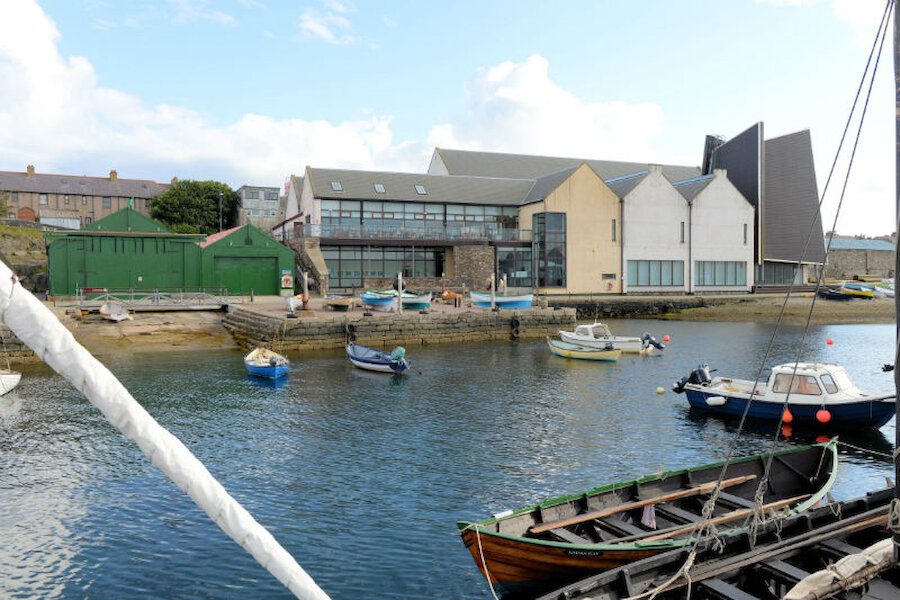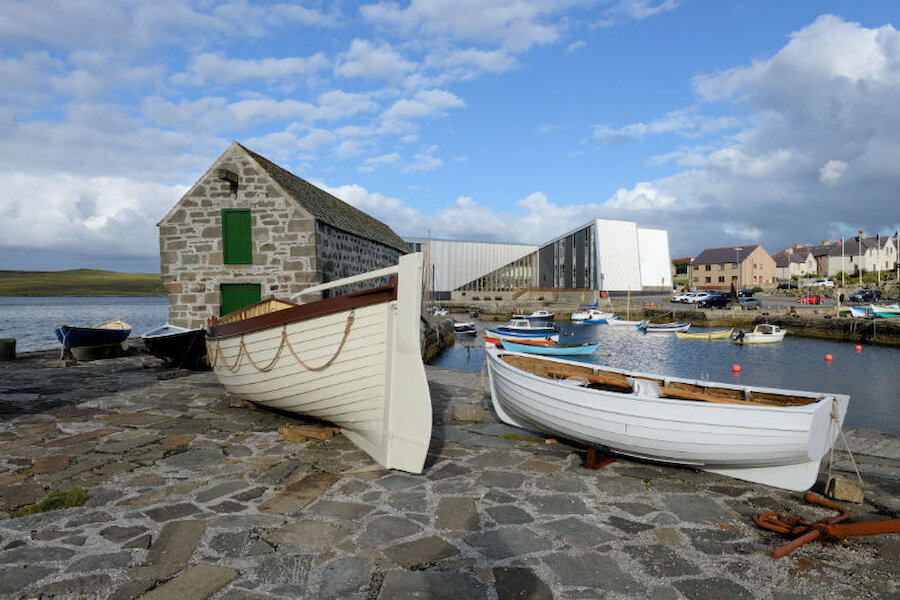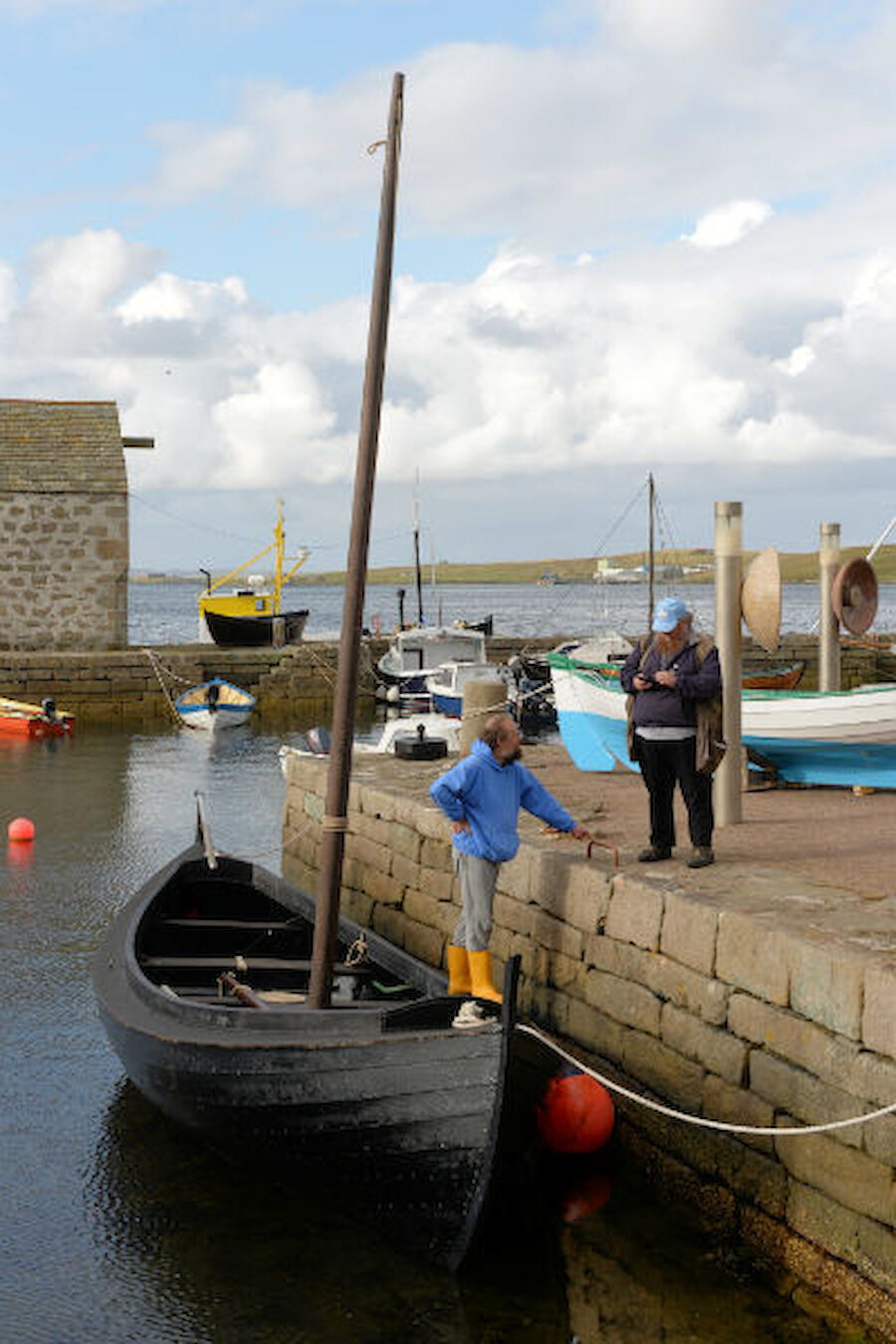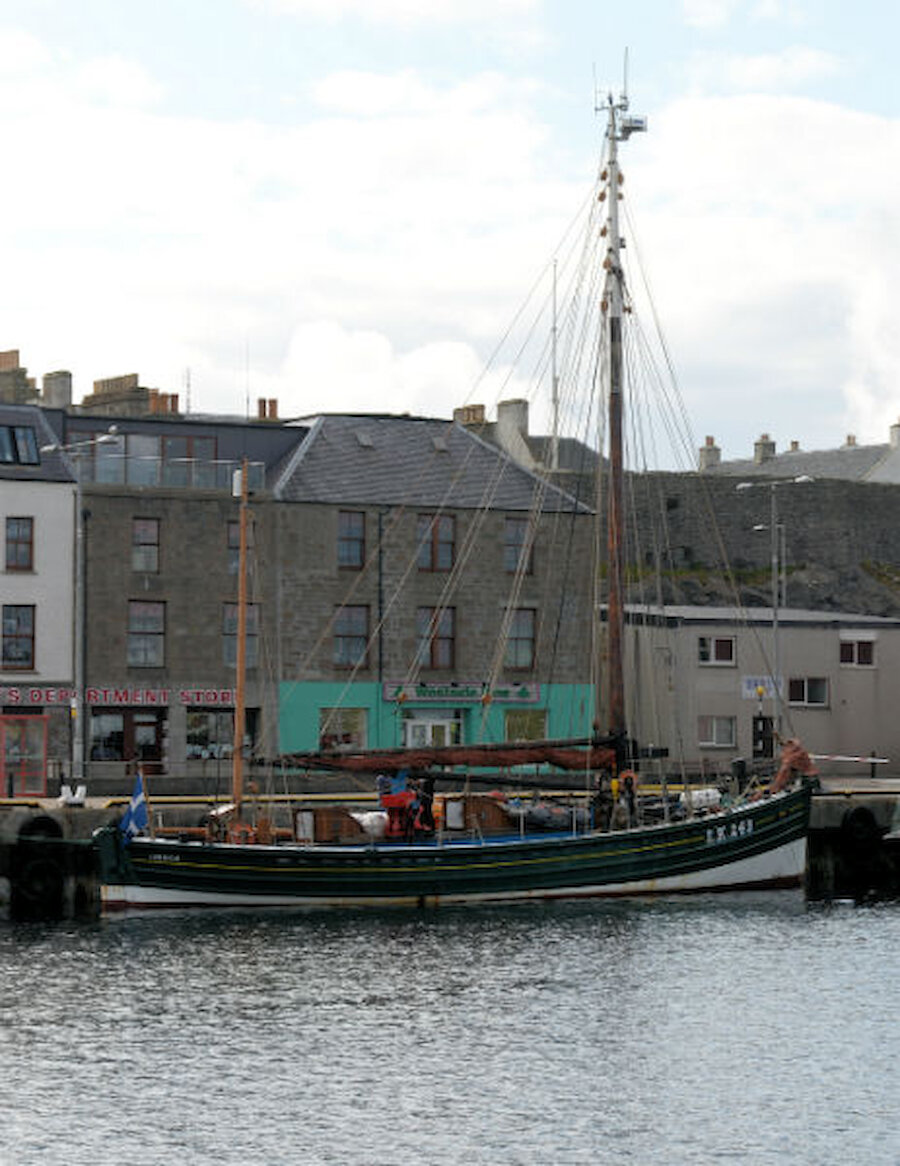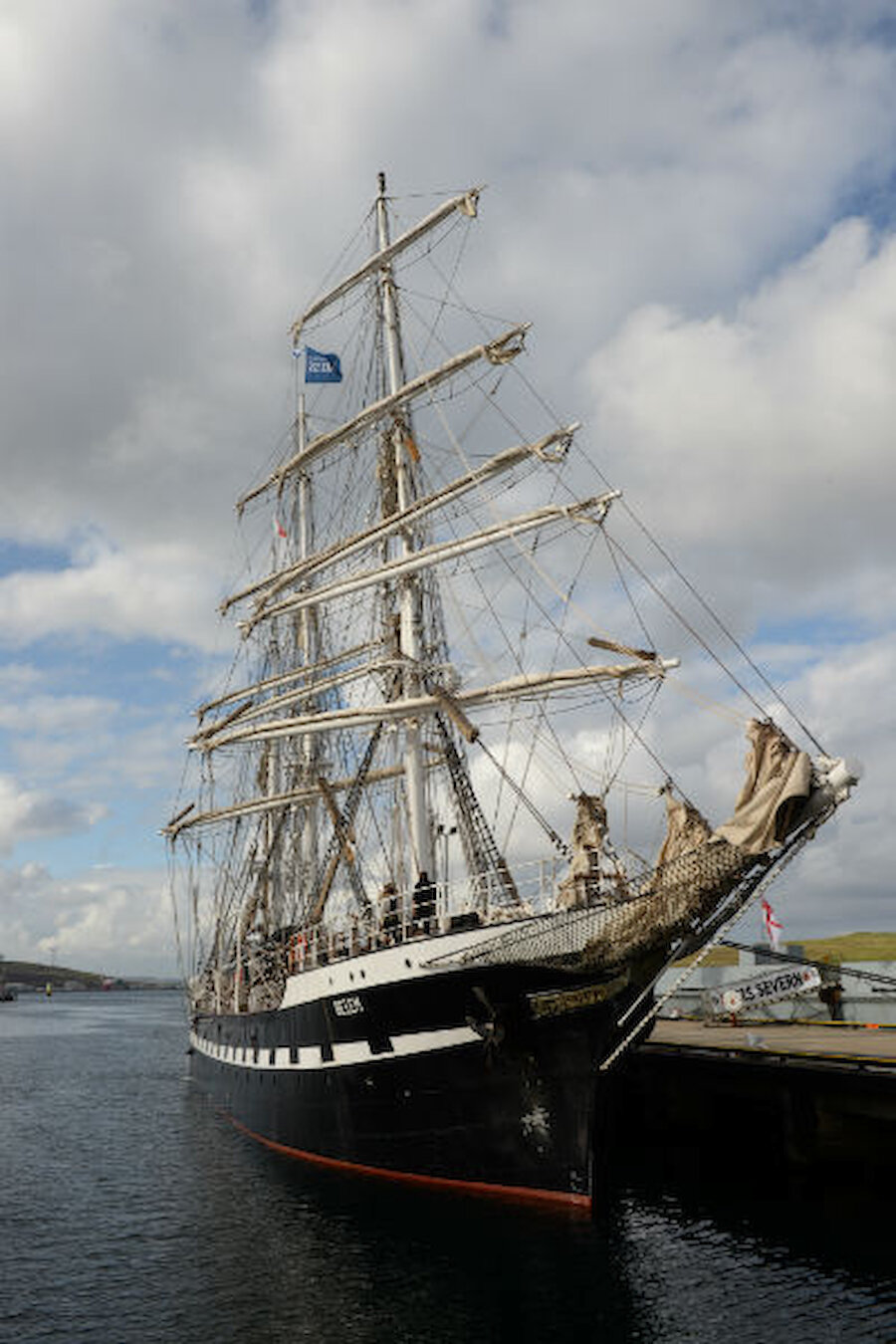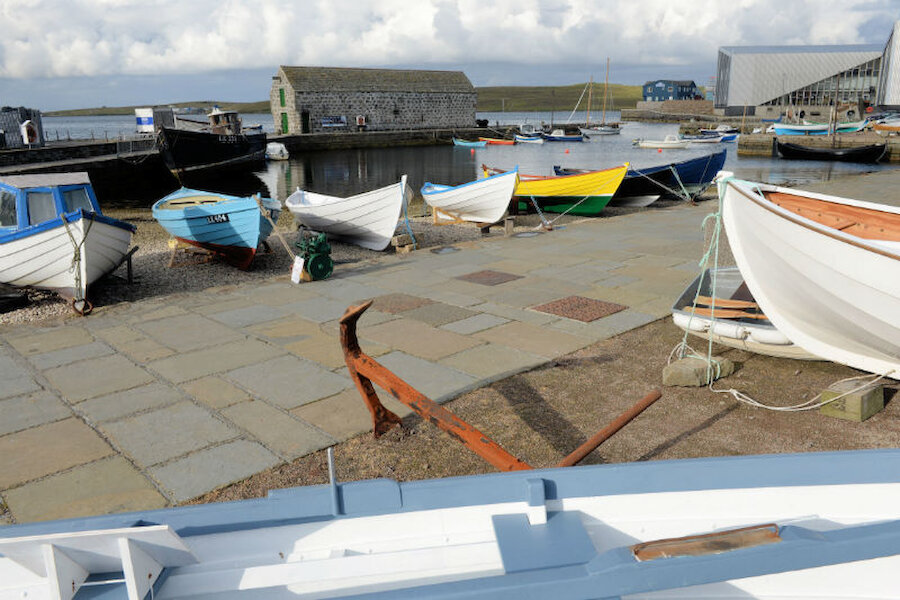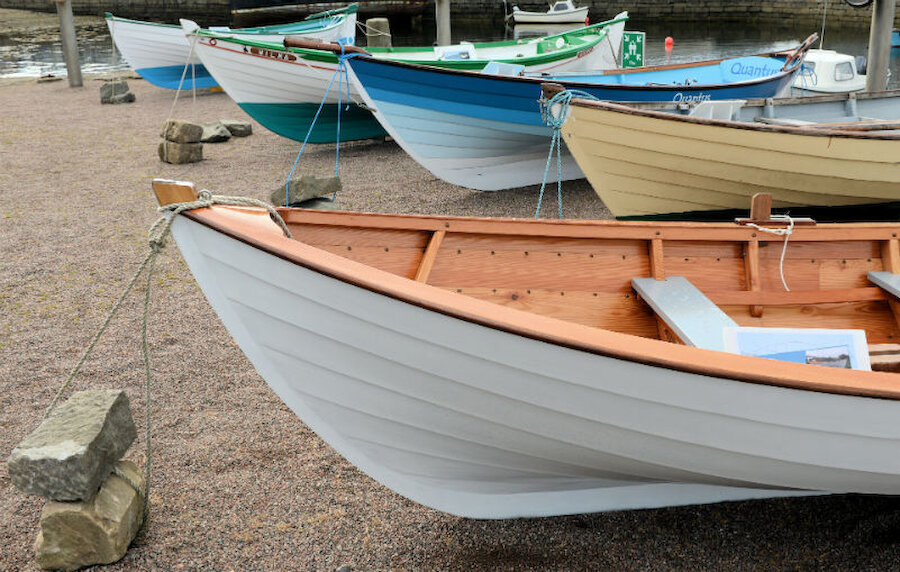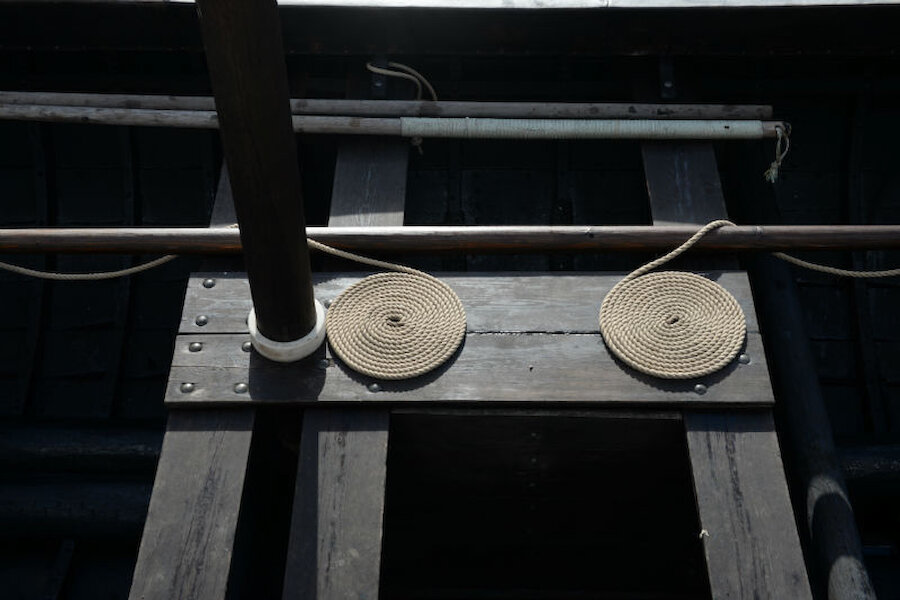The second Shetland Boat Week, held in mid-August, was blessed with generally good weather and attracted lots of interest from both locals and visitors. A great selection of events, ranging from talks to cookery sessions, meant that there was something for everyone to enjoy.
A veritable fleet of traditional craft was on display around the historic Hay’s Dock, next to Shetland Museum and Archives. There were many versions of the Shetland boat, ranging from the smaller dinghies right up to a much larger ‘yoal’. Such boats have been used for every purpose, from fishing to moving peats or sailing. Their largest cousins, the six-oared boats known as sixareens, were once the backbone of the Shetland fishing industry; one of the oldest survivors of that type is kept inside the Museum’s boat hall. Men used to row them fifty to sixty miles into the open Atlantic to engage in line-fishing.

